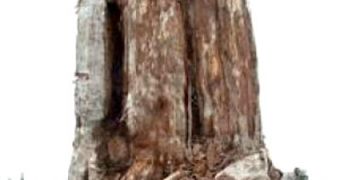Researchers in the United Kingdom are currently racing around the clock to find and preserve ancient trees buried underneath peat bogs in New Zealand. The investigators believe that the rings inside these trees might tell them more about how Earth's climate looked like about 30,000 years ago.
With these data in our pocket, we could then extrapolate on available information, and determine how the climate will look like in the near future. Such simulations already exist, but the goal is to make them as accurate as possible.
The scenarios they compute can then be used to sway policymakers and national authorities towards working more actively in the field of climate security and protection. Countries might be more willing to talk to each other if they have even more data available.
In order to get to that point, scientists first need to dig up a number of kauri trees, which have endured the passing of time, preserved in peat bogs. The relics need to be unearthed, put in holding chambers, and then analyzed in roughly the same conditions they were subjected to for the past 30 millennia.
The research effort is being conducted by a team of biologists led by experts at the University of Exeter Scientists with the new effort say that the climate records which could be extracted from the kauri trees span back to the end of the last Ice Age.
“While it will be fascinating to find out more about the earth 30,000 years ago perhaps more importantly we will have a better appreciation of the challenges of future climate change,” says University of Exeter expert Chris Turney.
But digging up kauri trees is tricky business. They are incredibly large, and have diameters up to several meters. They dwarf an average human in size, and are really heavy and difficult to move.
Scientists therefore have to find them, designate an area for digs, and then used specialized, heavy-duty equipment to extract and handle the tree trunks. However, the team is convinced that the scientific return of the study far outweighs the difficulties associated with getting the trees.
Each of the trees has lived for about 2,000 years, so they all have a story to tell about seasonal and climate variations. “This gives us a unique opportunity to increase our knowledge of the earth's climate and human responses to it at the end of the last Ice Age,” explains Christopher Ramsey.
“The radiocarbon measurements should give us important new data that will help us to understand interactions between the atmosphere and the oceans during this period when there was rapid and dynamic change,” he adds.
“Equally exciting is the prospect it will give us of more precise dating of archaeological sites from this period – illuminating the only window we have onto how humans responded to these major changes in the environment,” says the expert.
He holds an appointment at the University of Oxford School of Archeology, and is a part of the team conducting the new investigation, Daily Galaxy reports.

 14 DAY TRIAL //
14 DAY TRIAL //